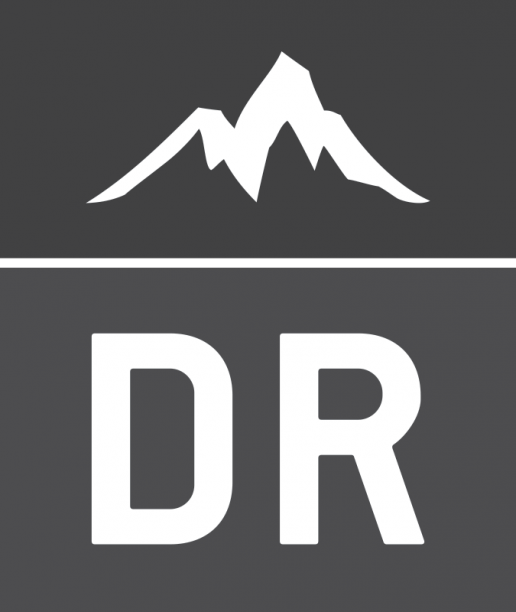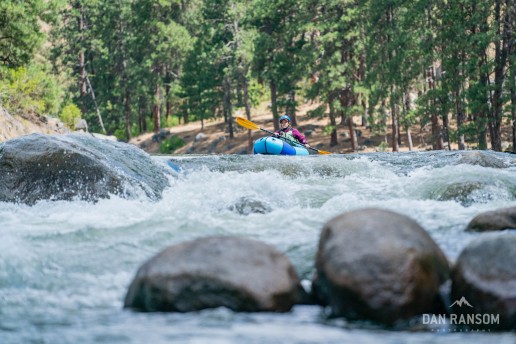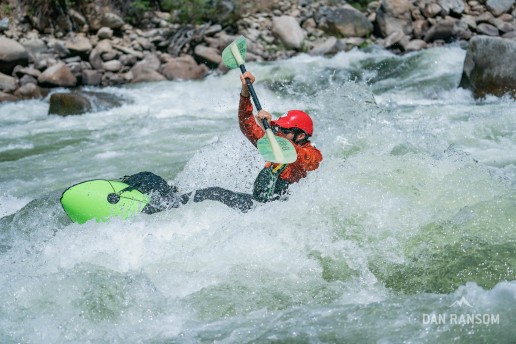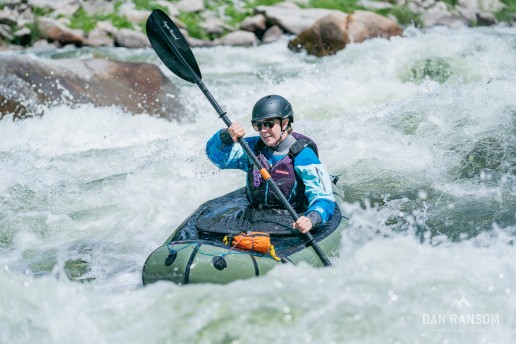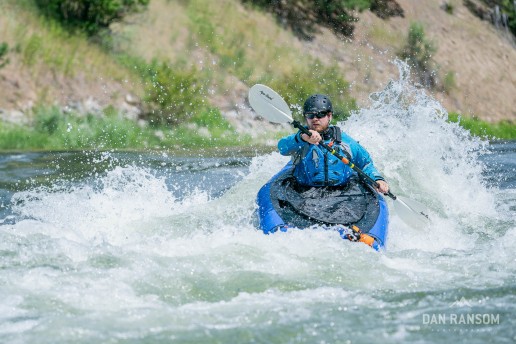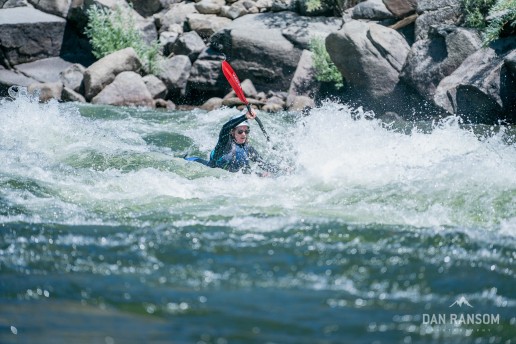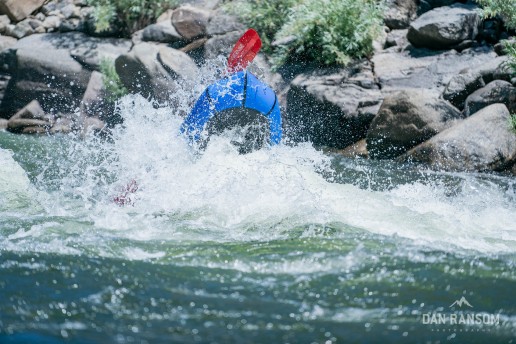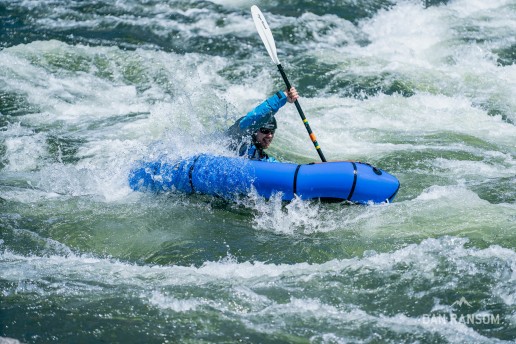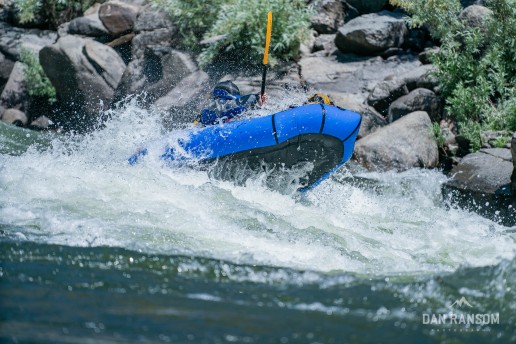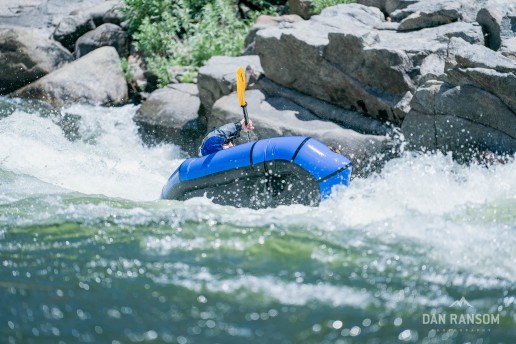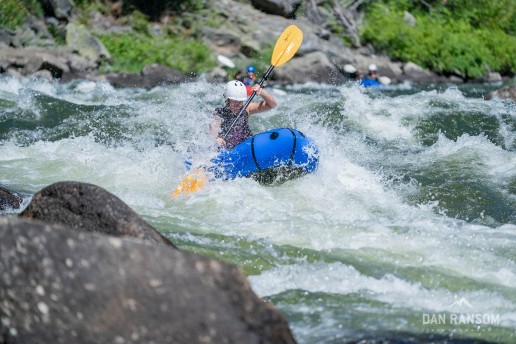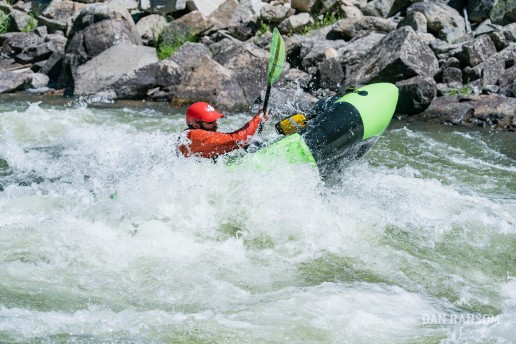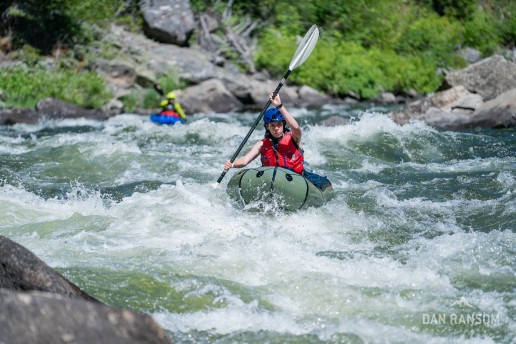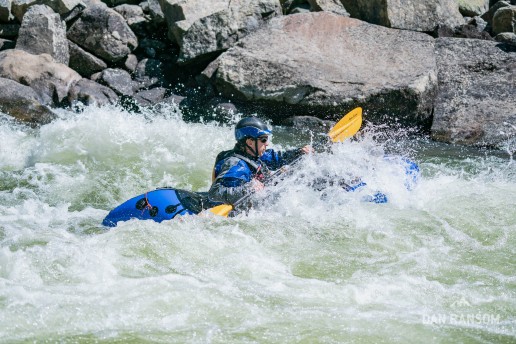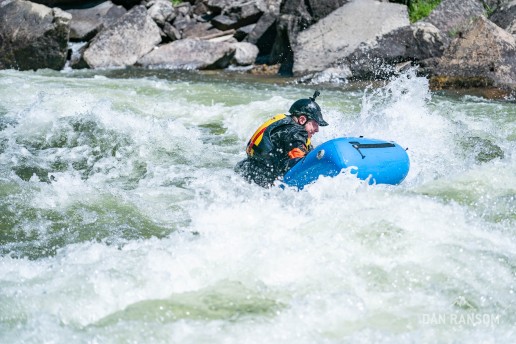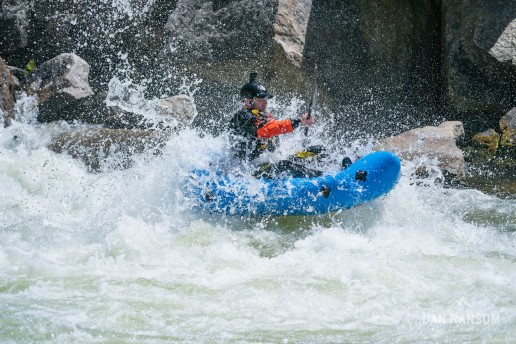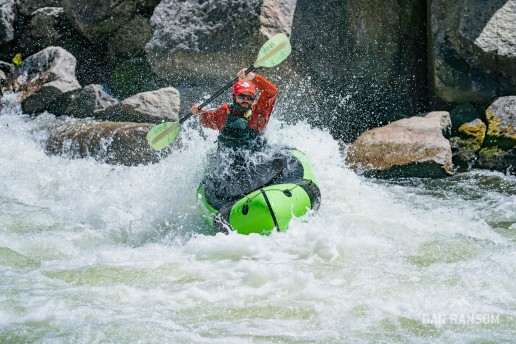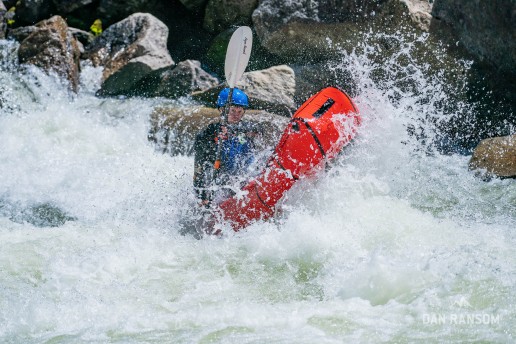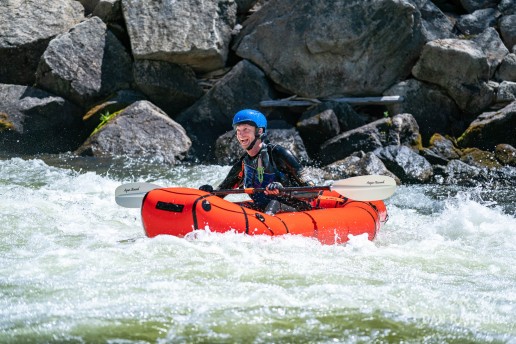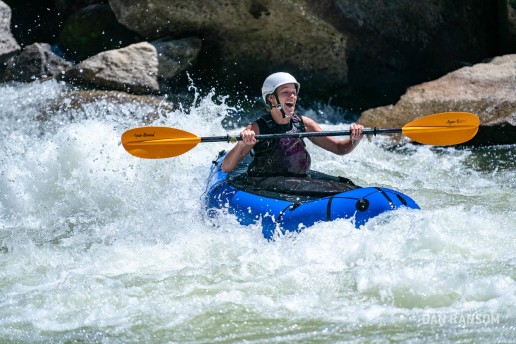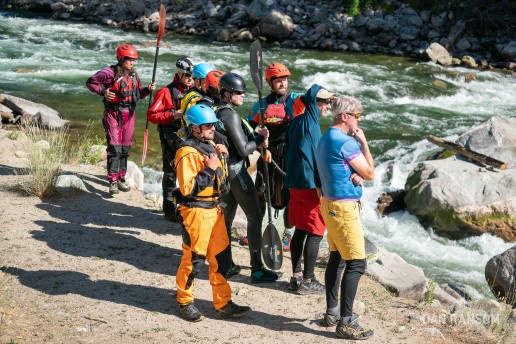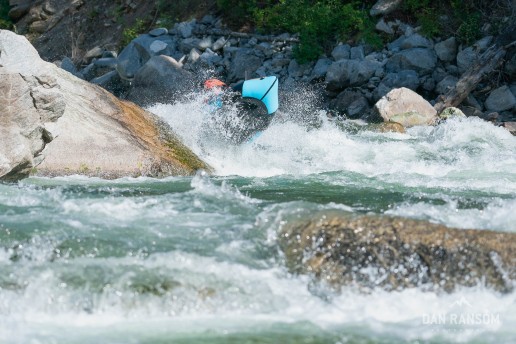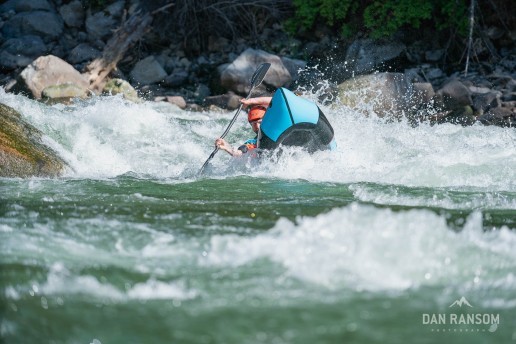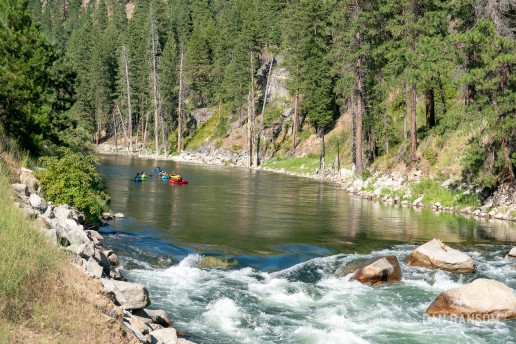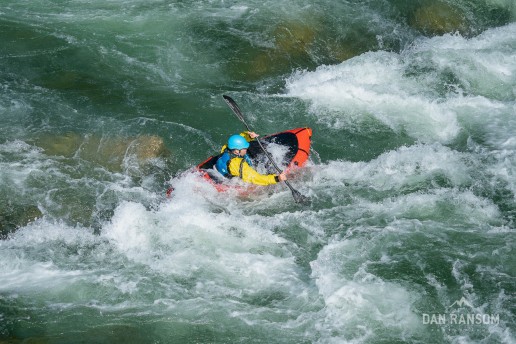Less Packing, More Rafting
I’d always heard the paddling on the Payettes is good, but I didn’t think it was this good. Truth be told, I’ve always avoided the zone because I figured the runs were roadside, crowded with commercial mayhem, not that scenic, and probably way too rowdy for my skills. About all I knew was that the famous North Fork Championship is held here every year, and it’s one of the gnarliest kayaking competitions in the world.
Almost all of those assumptions were false. Certainly there are a lot of guiding outfits, but the rivers are crazy beautiful and the crowds were manageable. I also didn’t realize there are runs that aren’t nearly as rowdy as the North Fork. There are amazing stretches of water from Class I scenic floats to super technical Class V all within an hours drive from camp. Top it off with hot springs within walking distance, and it is pretty much the perfect location for packraft roundup.
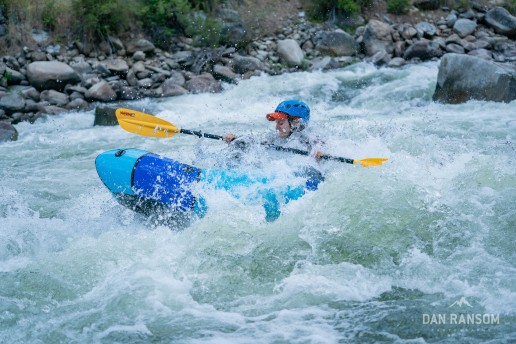
Upper Main Payette
Banks to Beehive Bend, Class III
Flow: 1300 cfs
The first morning of a packraft roundup feels a lot like dirt bag speed dating. Inevitably, everyone gets to camp super late the night before, so we stumble out of bed sleep deprived and under-caffeinated, yet strangely amped to go meet a bunch of strangers and do a round of quick meet-and-greets even though you are barely conscious. Odds are, there will be about 12 different plans being batted around, and all of them just sound so damn good!
If you are like me, you say yes to all of them. And then, an hour later you wander aimlessly back to your coffee you still haven’t brewed, and realize you really don’t have any idea what your plan is for the day.
My only objectives for the weekend were to run Swirly, the Upper Main, and Cabarton – and if I was feeling decently strong after a couple days, possibly the South Fork Canyon. Rumor was, of those options, the Main is the least interesting, so it was the logical candidate for a first date. By the time the caffeine finally fooled my adenosine receptors, we had ourselves a crew and a plan.
Turns out, the Main is no slouch, it is a rock concert of fun splashy class II rapids with a handful of sharp Class III drops eager to send you swimming.
If this was the least interesting run of the entire area, this was going to be one helluva roundup.
We rolled back into camp to find the crowd had doubled in size, a bunch of new folks were anxious to get on the water. A few more rounds of speed dating, and another plan is hatched for the afternoon: Swirly Canyon.
Swirly doesn’t have the fun drops and big waves that the Main has, but it gets its name from the confused eddy lines and strong hydraulics that form as water bounces around the very narrow canyon. The two miles or so in the gorge are super photogenic – so good in fact I decided not to bring my camera. Twice.
Payette North Fork
Cabarton Bridge to Smiths Ferry
Flow: 1800 cfs
The Cabarton run was my number one target for this trip. Seems the unanimous opinion is it is an even more beautiful stretch than the Upper Main, with similar quality of rapids. Unlike most of the other Payette runs, the Cabarton doesn’t have a road next to it for most of it’s run, so it feels a bit more wild and scenic.
The action picks up in Trestle, named for the railroad bridge that spans the river. It’s a long splashy rapid that ends with a few big packraft flipping waves.
Then comes a few miles of scenic but chill floating before the final mile or two, where there is a grip of fun rapids, ending with the iconic Howard’s Plunge.
Howards Plunge
After you pass under the highway bridge, the river narrows with a handful of splashy rapids before dropping steeply 12 feet into a massive wave known as Howard’s Plunge. You can’t miss it on the drive to the put in, and it’s worth a stop to scout. At our flows it was relatively friendly, hit it straight and you’ll more than likely stay upright. Of course, that’s easier said than done. But because it ends with a flatwater pool, it’s relatively low consequence. A perfect spot to run some laps, take less conservative lines, and shoot some photos.
Payette, South Fork
Deadwood to Danskin | The Canyon
Class III-IV
Flow: 1300cfs
This run’s got it all. Continuous fun whitewater, killer scenery, a mandatory (to me) portage at Big Falls, a fun but easy boof at Little Falls, and lots of opportunity for carnage.
It’s the carnage part of the puzzle that had me super nervous. I’m an intermediate Class III boater, not exactly known for keeping my head on a swivel. And with the Canyon rated at Class IV, I figured it was probably a stretch for my skillset. But back at camp every night, the groups returning from the Canyon couldn’t stop talking about how good it was. And at these flows, it was more Class III than IV. I’d felt pretty good the last few days, so decided to give ‘er a go.
It was the right call. The Canyon is possibly the funnest day of paddling I’ve ever done. So good, I went back and did it again the next day. No photos of this run, but I did snag a few GoPro clips.
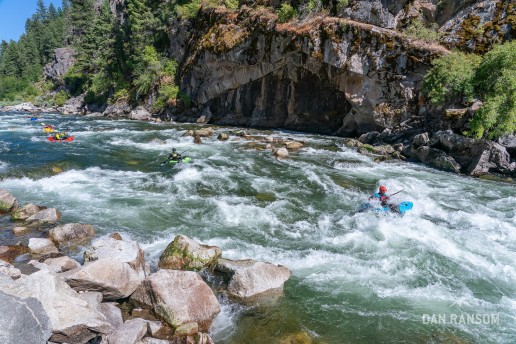
Payette, South Fork
Staircase
Class IV
Flow: 1300cfs
After the Canyon, Adrian and company went to run the famous staircase section on the Lower South Fork Payette. I snagged a camera and followed along roadside to snap a few photos. The entrance requires a pretty strong left to right move across an eddy line to avoid a big hole that easily flips packrafts. Flip there, and it’s a very long rocky swim to the bottom. Needless to say, I didn’t run it.
Big thanks to the American Packrafting Association and all the volunteers who helped make this year’s Roundup happen. It’s no easy task to put something like this together, this was some damn fine work!
If you aren’t yet a member of the APA, consider joining. It’s free!
The American Packrafting Association is an international association of paddlers dedicated to the conservation of wild rivers and wild places, promotion of packrafter safety and education, and preservation of packrafting opportunities on wild rivers and in wild places.
